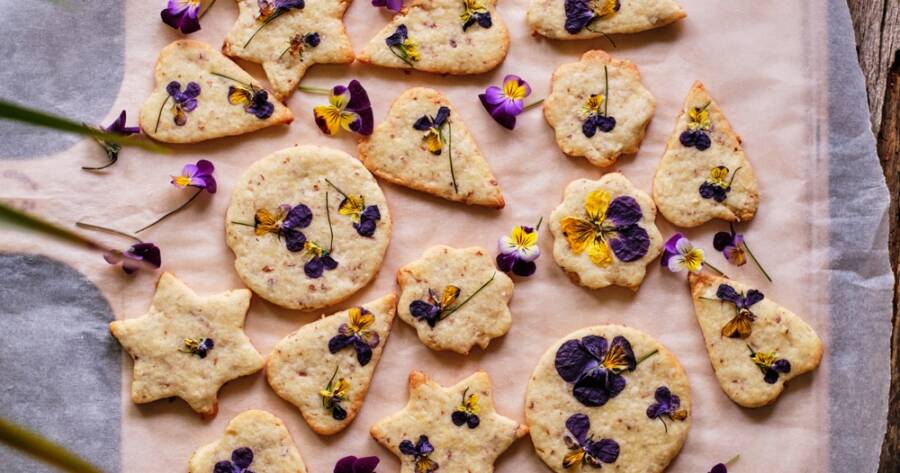Edible flowers have been used in culinary traditions for centuries, from ancient Roman feasts to traditional Chinese herbal recipes. Today, delicate blooms are making a comeback, not just as garnishes but as flavorful, aromatic, and visually stunning additions to meals, desserts, and drinks. Whether you’re dressing up a cake, infusing a cocktail, or sprinkling petals over a salad, understand how edible flowers offer a unique way to enhance both presentation and taste.
Choosing the Right Flowers
Not all flowers are safe to eat, so it’s important to choose varieties that are specifically labeled edible and grown without pesticides or harmful chemicals. If you’re growing your own, opt for organic gardening practices to ensure safety.
Here are some popular and flavorful edible flowers:
- Nasturtiums: Peppery and vibrant, great in salads or as garnishes
- Pansies and violas: Mild, slightly sweet, ideal for decorating baked goods
- Calendula (marigolds): Bright and tangy, often called “poor man’s saffron”
- Chive blossoms: Onion-like flavor, perfect for savory dishes
- Lavender: Floral and slightly sweet, used in desserts, syrups, and teas
- Hibiscus: Tart and cranberry-like, great for beverages and jams
- Rose petals: Aromatic and slightly sweet, used in everything from syrups to ice cream
Before using any bloom, be sure to verify its edibility through a reliable source and remove inedible parts like pistils, stamens, and bitter bases when necessary.
Flavor Meets Beauty
Edible flowers aren’t just pretty, they can enhance the flavor and texture of your dishes. For example, the peppery kick of nasturtiums pairs well with creamy cheeses or grilled vegetables, while sweet pansies can elevate a simple vanilla cake with their delicate taste and texture.
In savory cooking, herb blossoms like thyme, basil, and cilantro flowers add a concentrated punch of flavor to soups, salads, and sauces. Rosemary blossoms can even be used to infuse oils or season roasted meats.
In sweet recipes, try infusing cream or milk with lavender or rose petals before making custards, panna cotta, or ice cream. Hibiscus petals can be steeped into syrups or teas for a tart twist that brightens cocktails or glazes.
Creative Ways to Use Edible Flowers
Ready to experiment? Here are some inspiring ways to cook and decorate with edible blooms:
- Salads: Toss petals into mixed greens for color and subtle flavor
- Ice cubes: Freeze small blooms like violas or chamomile in ice trays for fancy drinks
- Cakes and desserts: Press pansies, roses, or calendula into frosting for a natural decoration
- Cocktails: Float petals in champagne or gin-based drinks for a sophisticated touch
- Herbal butters: Mix chopped edible flowers into softened butter for a colorful, flavorful spread
- Floral salts or sugars: Blend dried petals with sea salt or sugar for an aromatic seasoning
For a stunning centerpiece, consider a flower-infused cheese board, mixing bold cheeses with fresh herbs, nuts, honey, and edible flowers to delight the eyes and the palate.
Tips for Cooking with Flowers
- Start small: Introduce floral elements gradually to avoid overpowering a dish
- Store correctly: Keep flowers in the refrigerator, ideally in a damp paper towel inside a container
- Use fresh or dried: Both fresh and dried blooms have culinary value, dried flowers are great for teas and baking
- Be mindful of allergies: If you or your guests have seasonal allergies, double-check that the flowers won’t trigger a reaction
A Feast for the Senses
Cooking with edible flowers is more than a trend, it’s an art form that brings beauty, flavor, and joy to everyday meals. With their natural charm and surprising versatility, blooms can turn even the simplest dish into something extraordinary.
Whether you grow them in your garden or buy them from a trusted source, edible flowers invite you to slow down, get creative, and enjoy food as a full sensory experience.

